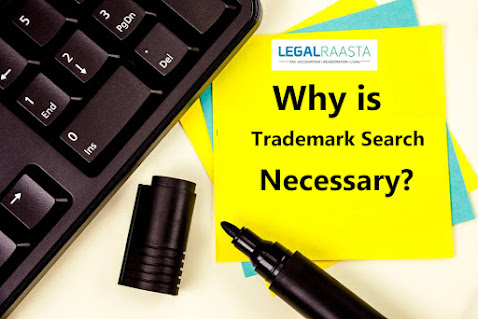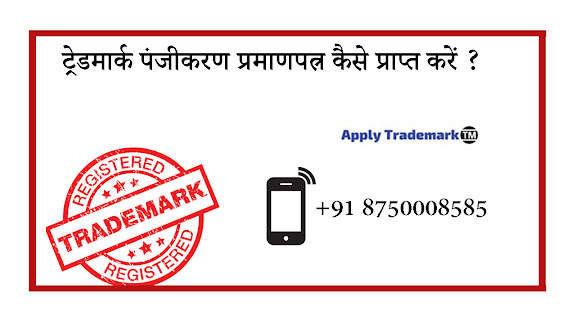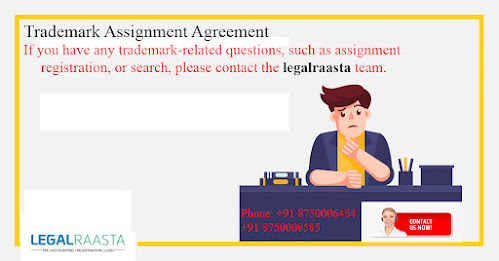Why is Trademark Search Necessary?
A Trademark is a unique identity of a product or business.
It can be represented as a graphical representation, text, color combination,
sound, smell, taste or even a name giving a full-fledged definition to a brand.
Branding is a creative process and requires considerable research and
brainstorming. Registration requirements vary depending on the class. To
prevent inconsistencies, a Trademark Search
must be conducted prior to filing a Trademark
Registration Application. Large brands frequently register their names in
each of the 45 classes that follow, but smaller brands only do so in industries
they are already in or intend to enter. The present blog discusses
choosing an appropriate trademark class for registration from the trademark
classification. Therefore, we are mentioning here what are trademark search classes and how to
choose trademark class for trademark registration and what all are the Benefits for Trademark Search and
anything you want to know for Trademark
Search in this blog.It prevents you from spending resources and
money on a mark that may not be available.It provides you with time and
flexibility to modify your mark before you launch your product/service
It helps you to avoid the costs business disruption
associated with a forced rebranding.It helps you to avoid the costs of
litigating a dispute.It provides you with insight on how to brainstorm for a
mark mindful of potential registrability concerns.
What is the International Nice Classification (NCL)?
In 1957, The World Intellectual Property (WIPO) set up the Nice Classification (NCL). This
system groups goods and services together using a single classification scheme.
Since the agreement covers trademarks registered in several different
languages, the system facilitates searches for marks that may need translation.
NCL separates business activity into 45 classes: 34 for products and 11 for
services.There is a detailed taxonomy or tree-like listing of goods and
services, compiled by the European Union Intellectual Property Office (EUIPO), within
each class that further differentiates categories. These entries provide
greater detail but are non-binding categories. Since the use of this
classification scheme is widespread and complicated, seeking professional help
to conduct a Trademark Search is
well-worth considering. USPTO and most
countries worldwide have adopted the NCL protocol. The Classification Agreement
lists over 10,000 goods and 1,000 services. A new edition is published every
five years and a new version of each edition is published annually. Trademark
offices of countries who have adopted this agreement must include the NCL codes
in their official documents. You can find your class number using our Trademark
Class search engine.
What is multiple-class trademark application?
The Nice Classification System categorizes products and
services by class; you may file your trademark in one or more classes.There are
countries that allow one class per application, whilst others allow multiple
classes within the same application.The benefit of filing one application per
class is that each class will have its independent process. If one class
receives an objection or an opposition, the other applications/classes will not
be affected. The disadvantage is that the price for various applications is
higher.Furthermore, filing a multi-class application is cheaper, but there is a risk that the
entire application is affected if one of the classes receives an objection or
opposition.In the first scenario, filing in more or less classes will not affect
the registration probability each application. In the second scenario, if there
are more classes, there is greater exposure and the chances of receiving
objections or oppositions increase.The Trademarks Office provides a certificate
per application not per class. Remember that not all countries allow a
multi-class application.
How do I perform a Trademark Class Search?
Trademark classifications are necessary for the registration
process but can be misleading. The 45 categories in the Nice Agreement describe
in generic terms, highly nuanced areas of commerce. We recommend you begin with
your core business and describe the item(s) that you produce in clear, precise
terms. Once you conclude what the best category is, focus on fringe commercial
activities. Add as many trademark categories as you need to help define the
property rights you want to protect. Business plans typically span a variety of
areas to allow flexibility in the marketplace. Choose classes that allow you to
protect your long-term goals. The appropriate choice of a trademark class will
not only increase the likelihood of acceptance, but also improve your ability
to defend future infringement.You can also find your class number using our
Trademark Class Search tool.When you apply for your trademark application, the
classification choices depend on how you define your goods or services. Once
you have a definition, find at least one classification class that covers your
business definition. Consider other overlapping trademark classes that also describe
your goods or services. You should also consider coordinated classes. Your
choice of one or more classification categories will have a significant impact
on the acceptance or rejection of your application.
Do I need to know my trademark class to file a trademark? Importance of Trademark Search:
You must include the appropriate trademark class designation
when you complete the registration application, because almost all Trademark
Offices around the world use industrial and commercial groupings to efficiently
search for potential infringement issues. These regulatory bodies and
administrators need a way to differentiate the numerous trademarks used around
the world. Separating marks into classes that are divided into goods and
services is a simple first step in reviewing an application for a new mark.
When evaluating the strengths or weaknesses of the proposed trademark, a
classification system facilitates the association of "like" with
"like" and thus, helps match competitors more efficiently in similar
or linked industries.
Another reason behind needing to know which trademark
class(es) cover your mark is for your protection. When you use the most
appropriate class(es) for classification, you will compare your trademark to
marks already used by competitors in your chosen markets. How does the
uniqueness and distinctiveness of your mark compare to other marks? Does the
trademark offer you a competitive edge regarding your brand’s message?
Using a classification system simplifies public searches of
your mark by competitors in your industry and makes it easier for competitor’s
to avoid any infringement issues. The USPTO's Acceptable Identification of
Goods and Services Manual is one of many sources to lookup trademarks online.
You need to choose a trademark class when you apply for your mark to help a
trademark office notify your target audience of your mark. A trademark class
helps when both researching pre-existing marks as well as searching for
potential property claim to avoid future infringement issues.
If you are unaware of which class or classes offer the best
protection for your goods and services, familiarize yourself with the NCL
listing. We alternatively recommend ordering a professionally prepared
Trademark Comprehensive Study. By opting for this, our experienced attorneys
will be able to review your product or service description and match it to the
most appropriate class(es). If they have
any questions or need more clarification, they will contact you.
Trademark Search
provides the useful information about the existing brand name or trademark.
It will make you aware of the other trademarks which
phonetically similar to your trademark.
The Search process will provide the information of any
Well-known trademark.
The most important reason to do a trademark Search is to avoid liability from trademark infringement
lawsuits.
Trademark Search
should also be done even if you have registered a trademark to know the
potential infringer who may be using your trademark in their business to dupe
your prospective customer.
What are coordinated classes?
Coordinated trademark classes cross over within the standard
NCL class categories because they relate to one another. Most businesses
diversify their activities to improve their market share. Your trademark
application should reflect your activity in these associated industries to
protect your brand name. Choose coordinated classes that not only refine your
registration application, but allow for any potential future expansion of your
commercial activities. These related classes can be used during a comprehensive
Trademark Search to find conflicts
before the submission of your application to the USPTO.
How do I determine the correct classes for my product(s)?
You must select the correct classification to increase your
probabilities of a successful trademark registration. The Trademarks Office
will not reimburse fees associated to your trademark application if your
trademark is rejected. Careful revision by a trademark expert, that specializes
in analyzing the strength of your trademark in its selected class(es) compared
to your competitors is important as the number of objections and oppositions
are increasing.You may also use our Trademark
Search Tool to find the class number.
I know you must be thinking why you search trademark, well
the answer is very simple; whenever you are going to register your trademark
you should at least check whether your trademark, logo, etc is unique or it
resembles existing mark of another person.
Conclusion
Trademark search is
prior step to trademark registration because it is important to know whether
the trademark name is unique or not because if your trademark is similar to the
existing trademark.Therefore it is advisable to search similarity of your name
with other registered names, otherwise, trademark application has to face so
many hurdles before reaching to registered status.Therefore, trademark search is a continuous
exercise instead of one-shot event.Therefore, LegalRaasta provides the trademark search facility absolutely
free. This search functionality will not only suggest the uniqueness of your
trademark but it will also guide you that under which class your mark will
fall. This is like a tailored made approach to make trademark search no more tedious.



.jpg)
Comments
Post a Comment